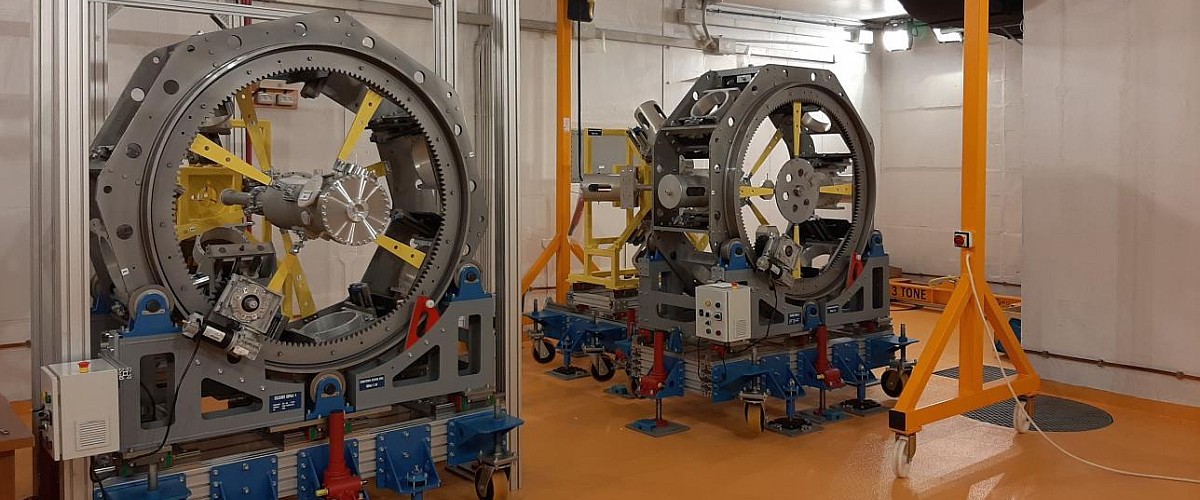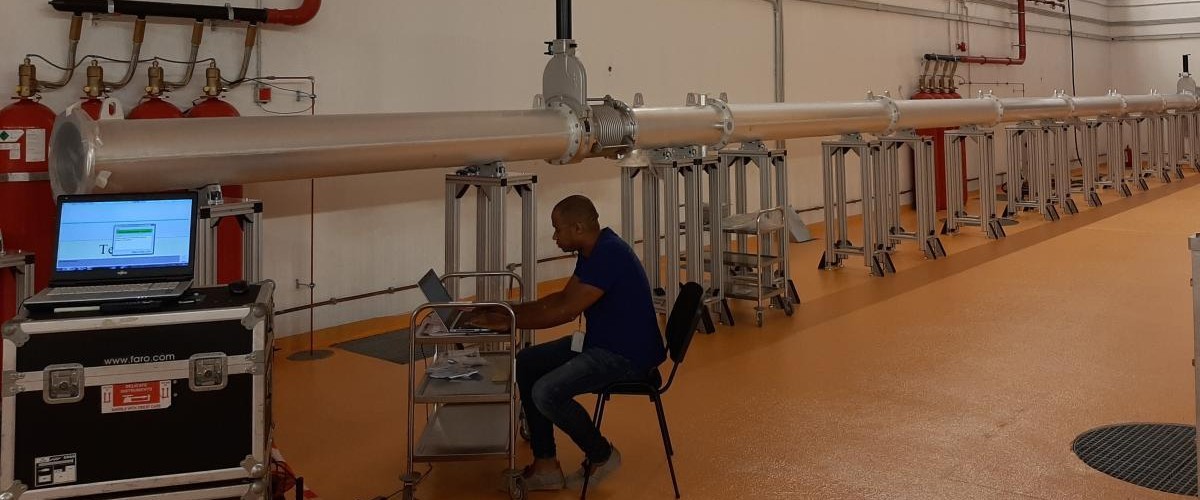The mechanical support structure for ELIADE - an important experimental setup for the nuclear physics research driven by gamma beams - is now in place. The complex metallic structure will host state-of-the-art Ge detectors of the segmented Clover type and LaBr3(Ce) scintillator detectors and it was designed to give a large freedom in the arrangement of the detectors around the target depending on the combination of beam parameters and target types. The mechanical structure is fitted with a vacuum interaction chamber that allows for an accurate alignment of the target with the beam, as required by the experiments planned at ELI-NP. A special device was developed for the loading/unloading of the Clover Ge detectors. Both the mechanical structure and the interaction chamber were manufactured by a Romanian company, SC Eutechsys, with more than 70% Romanian-made parts, based on detailed 3D models prepared by ELI-NP experts.
The ELIGANT-GN mechanical structure was successfully installed at ELI-NP. ELIGANT is one of the main set of instruments for nuclear physics experiments with the gamma beam system that will be available at ELI-NP. The main focus of ELIGANT is physics cases involving the emission of one or more neutrons from a target after interaction with the gamma beam. One of the devices in the ELIGANT collection of instruments is the ELIGANT-GN, comprising both neutron and gamma-ray detectors. The design of the neutron structure for ELIGANT started in 2015. The main challenge was to build a sturdy support for the ELIGANT neutron detectors (62 detectors) but at the same time to limit the amount of material to avoid neutron activation. The manufacturing of the structure required the effort of several Romanian subcontractors under the coordination of CLR Hydraulics - the main contractor. ELI-NP's Technical Division assembled the structure in collaboration with the ELIGANT group and under the supervision of personnel from CLR Hydraulics. The structure was tested for a 2mm-precision alignment of detector and target position.
"Collaboration with high-tech industry is becoming essential for research. Building complex systems as required by state-of-the-art experiments at the frontiers of knowledge is only possible with a highly specialized contribution from industry." Calin Alexandru Ur, Technical Director of ELI-NP


